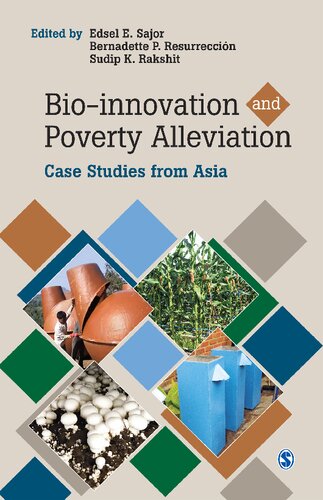

Most ebook files are in PDF format, so you can easily read them using various software such as Foxit Reader or directly on the Google Chrome browser.
Some ebook files are released by publishers in other formats such as .awz, .mobi, .epub, .fb2, etc. You may need to install specific software to read these formats on mobile/PC, such as Calibre.
Please read the tutorial at this link: https://ebookbell.com/faq
We offer FREE conversion to the popular formats you request; however, this may take some time. Therefore, right after payment, please email us, and we will try to provide the service as quickly as possible.
For some exceptional file formats or broken links (if any), please refrain from opening any disputes. Instead, email us first, and we will try to assist within a maximum of 6 hours.
EbookBell Team

5.0
50 reviewsThe proposed volume attempts to understand how forms of bio-innovation might be linked to the problem of poverty and its reduction through an inquiry into a number of empirical cases of present-day bio-innovations in Asia. Conditions and circumstances in countries like Cambodia, China, India, Korea, Nepal, Philippines, and Thailand are quite different and provide a mosaic of varied experiences in bio-innovation that include shrimp farming, GMO cotton, bio gas, organic farming, and vaccines.
Offering important insights into various forms of bio-innovation efforts and their effects on poverty alleviation, this volume is divided into three major themes that organize the main sections of the book―benefits for the poor: actual, direct, and prospective benefits for the poor; absence of positive impacts and institutional constraints; pro-poor drivers and embedding in anti-poverty alleviation.
The central questions addressed here are:
• Ways and circumstances in which certain forms of bio-innovations affect the poor and enable poverty alleviation.
• Critical factors and conditions for improving the positive impact of bio-innovations on poverty alleviation.
• Poverty alleviation goals should be the point of departure in rationalizing, identifying and designing appropriate and relevant bio-innovation programs.